Contributed By
Published
Are the mind and body the same thing, or are they two parts of a whole? This question is discussed in relation to the multiple identities of the Heresy Dragon.
Contents
- Introduction
- Materialism
- Dualism
- Panzer Dragoon Saga’s Ending
- The Separation of the Two Halves
- Implications for Dragon Identity Theories
- Conclusion
Introduction
One of the great questions of philosophy is the mind-body problem: what is the relationship between the body and the mind? Are the body and the mind two separate entities, existing independently from one another (either as different substances or a collection of properties)? Or should the mind and the body be treated as one and the same, different words for a single entity?
In this article, I shall discuss two of the major responses to the mind-body problem and how they relate to the Panzer Dragoon series. The first is Cartesian dualism, specifically interactionism, the view that the mind and the body are different entities which interact with one another. The second is materialism, the belief that the mind exists as physical matter inseparable from the body.
The identity of the Heresy Dragon is a topic of hot debate. Is the dragon’s mind and body one and the same, or does his mind exist as an independent entity?
Materialism
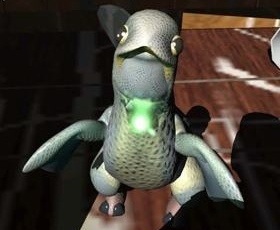
Lagi the coolia is born in the opening sequence of Panzer Dragoon Zwei. At this point, the player, without further knowledge of Panzer Dragoon Saga, might be led to believe that there is only one entity: Lagi the coolia, who then grows into a dragon. In philosophy of mind this position is known as materialism or physicalism. Materialists do not see a distinction between the body and the mind. The mind is a part of the body; in humans (and presumably coolias too), it is the brain.
If materialism is true in Lagi’s case, this raises some interesting questions. Firstly, if Lagi was a mere (non-human) animal, would he simply be acting on instinct in his quest to destroy Shelcoof (and later, the deactivation of all the Towers)? If that were so, then Lagi’s behaviour would be similar to a predatory animal. His brain would allow him to perform standard tasks that were linked to his survival, such as defending himself against Imperial ships and biomonsters. This seems consistent with the behaviour that we see at the start of Panzer Dragoon Zwei. Lundi was guiding Lagi towards Shelcoof, the same way that a rider guides a horse. But then, as his journey progresses, Lundi begins to see his quest in a different light:
Why do I follow that airship? To be honest, I don’t know… Revenge? Well, perhaps at first… But something more draws me to it.
We learn from future games that it was not Lundi’s mission at all, but Lagi’s mission. Although some animals such as swallows migrate great distances without a human guide, even at this point there seems to be more to Lagi’s mind than what you would expect from a regular animal’s brain. In Panzer Dragoon, the Sky Rider tells Kyle with his dying breath, “my dragon knows the way…”. This statement sheds significant doubt on the “mere instinct” hypothesis. There is an intelligence behind the dragon’s mission.
Secondly, could a materialist animal mind explain the bond between Lagi and his rider? Perhaps. Anyone who cares for their pet dog or cat will be able to relate to this: it is possible to bond with other animals. Animals will recognise the scent or other characteristics of friendly humans and subsequently a form of trust is created. Yet, the bond between Lagi and his riders is made out to be much more than this. He leaves his riders with visions, and they all shared a significant connection with him. In Dragon Book 2 Lundi writes: “While fighting, I felt as if I became one with Lagi. There was no fear.” Perhaps this was just his feeling, but as evidence for an intelligent connection mounts up it should at least make us ask the question: was there more than just a materialist animal mind behind this dragon of legend?
Dualism
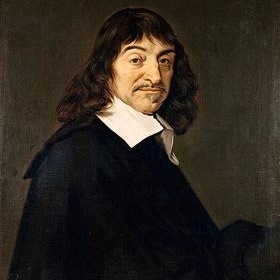
René Descartes (image from his Wikipedia article) was a seventeenth century philosopher, often credited with being the father of modern philosophy. He is perhaps most famous for his argument “Cogito, ergo sum” which is Latin for “I think, therefore I am”. Descartes used this argument to prove his own existence; so long as thoughts were running through his mind, he could not doubt that his mind existed, even if proof of his body’s existence (as well as the rest of the external world) could possibly be an illusion. Anyone who has seen The Matrix film trilogy will be able to relate to Descartes’ argument; it is at least conceivable that we could all be plugged into a computer simulation, our bodies a mere figment of our imaginations.
There is more to Descartes’ argument than this, however. Descartes believed that using the Cogito, he could prove that the mind and body were two distinct entities. His argument can be summarised as follows:
- I cannot doubt the existence of my mind.
- I can doubt the existence of my body.
- Therefore, my mind and body are distinct.
Whether Descartes’ argument offers a sound proof of the dualistic mind is certainly questionable; many philosophers do not find his argument convincing, but the reasons why the argument is problematic fall outside the scope of this article. My point here is to show you how this solution to the mind-body problem relates to the concept of the Heresy Dragon. Descartes believed that his argument was proof that the mind was a seperate entity. He believed there was a two way interaction between these dual entities. The mind decided on an action (such as avoiding an Imperial cannon blast), sent those thoughts to the body which would then perform the action. Likewise, if the body received some information through sense experience (such as seeing a biomonster on the horizon, or feeling the pain of a laser blast), it would upload that information back to the mind. The body and the mind were two entities, but bound together as one.
Ask yourself, could we see Lagi as having a mind distinct from his body? Could Lagi’s body be animal, but his mind more than a mere animal? Could his body be the carrier of a separate and much more intelligent mind?
Panzer Dragoon Saga’s Ending
At the end of Panzer Dragoon Saga, players are introduced to the true identity of the dragon, the black dragon who exists in Sestren-space. It is revealed that this black dragon (known by many fans as the Heresy Program), was ejected from Sestren prior to Panzer Dragoon Zwei. The Heresy Program then entered the mutant coolia Lagi who was subsequently born with a pair of wings.
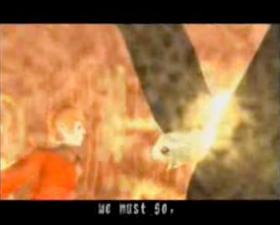
As the Heresy Program gives the Divine Visitor his final message we see Lagi the coolia’s head peaking out from the Heresy Program’s form. The head changes to represent the different forms that the physical dragon took over the course of the trilogy. The two drift away from sight; the same, yet different parts of a whole. It seems that this dual entity conception of the dragon fits nicely with Cartesian dualism. The Heresy Program can be seen as the mind, and the physical dragon as the body. The mind controls the body, and the body responds with feedback for the mind to process.
This solution would explain much. As Lundi writes to the next dragon rider in his Old Diary, “The dragon you ride has inherited the soul of my old friend”. He writes as if they are not one and the same. It’s possible that when Lundi uses the word “soul” here he is talking about the Heresy Program, distinct from Lagi the coolia. Regardless, Panzer Dragoon Saga’s ending explains how Lagi was able to bond in a deep and meaningful way with his riders, send them visions, and “know” things about the location of the Towers and Azel that a mere coolia would not have the intelligence to comprehend. Yet is it as simple as this? Is this enough to write off a materialist account of the dragon’s mind just yet?
The Separation of the Two Halves
In Panzer Dragoon Orta, we learn that at least one “half” of the dragon survived. The Heresy Program tells Edge “Now the Divine Visitor must destroy me”, implying that he is deactivated or destroyed when the Divine Visitor presses the button to free the world from the will of the Ancients. Yet, his other half, the physical dragon is given a choice to continue on in the physical world:
(( Your mission is completed. Yet, you still wish to remain? ))
(( Your body is fragile and mortal now. ))
(( Your life will more than likely end out there if you continue. ))
(( Alright, I understand. ))
(( Farewell, my other half… ))
(( I must rest… ))
(( Watch over our friends for me… ))
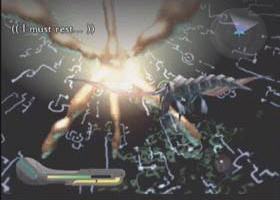
So the two halves go their separate ways. The physical dragon meets Orta, aids her on her quest, and then dies, presumably of old age. But this raises some serious implications for the dualist account of the dragon’s mind. If the dragon no longer has a mind, how can he function at all? A functioning body that does not have a mind is a mere zombie. Yet the dragon in Panzer Dragoon Orta clearly exhibits many of the same traits as the dragon in the Saturn trilogy. He seeks Orta out in her moment of need, and leads her to her mother’s memory within the Sestren network. Clearly, this dragon is not a zombie and possesses some type of intelligent mind.
We’re back to square one: either dualism or materialism could be true of the dragon’s mind. One could come up with the idea of a third entity existing. The physical dragon has both a mind and body prior to the Heresy Program entering his body in Panzer Dragoon Zwei, with the Heresy Program acting as a second mind, co-existing alongside the physical dragon’s mind until the end of Panzer Dragoon Saga. Since the Heresy Program appears to be immaterial, there seems no need to invoke a fourth entity (the Heresy Program’s body) unless we want to say that the black dragon seen at the end of Panzer Dragoon Saga is the Heresy Program’s physical body, rather than a visual projection of the program.
Alternatively, if materialism is true of the dragon, then there is simply two entities. The physical dragon is one half, and the Heresy Program is the other. The physical dragon’s mind is not separate; his brain is his mind. The Heresy Program was merely a passenger, a separate entity arriving at the start of Panzer Dragoon Zwei and departing at the end of Panzer Dragoon Saga. He may have influenced or controlled some of the physical dragon’s actions, but ultimately, the two were as separate as you and I. If the materialist account of the mind is true, I like to think that the Heresy Program gave Lagi the animal’s brain a “boost of intelligence”. Such intelligence would have remained at the end of Panzer Dragoon Saga, explaining how Orta’s dragon was able to display the same characteristics of having an intelligent mind as when he was sharing a body with the Heresy Program.
Implications for Dragon Identity Theories
As many will know, the identity of the dragon is confusing enough without bringing the mind-body problem into the discussion. Nevertheless, I think it is worth looking at the ramifications that this philosophical question has on three of the dragon identity theories.
In his Different Dragons Theory, Lance Way proposes that the dragon in each of the three Saturn games is a separate physical animal. Lagi the coolia dies at the end of Panzer Dragoon Zwei, and the Sky Rider’s dragon dies sometime after the events of the original Panzer Dragoon. Only Edge’s dragon, the dragon from Panzer Dragoon Saga, survives the ending and goes on to rescue Orta from the Seekers many years later. Although Lance disagrees with the idea that it is the same physical dragon in all four games, his theory supports a dualist concept of the dragon’s spirit (the Heresy Program) living on through the entirety of the Saturn trilogy, as well as the spirits of Lagi and the Sky Rider’s dragon being reborn in new bodies (the baby dragon and Edge’s dragon) that eventually merge to form the Solo Wing. Sadly, if we look at his theory from a materialist perspective, the dragons in the first two games do not survive at all; as animals, this would presumably be the end of their existence.
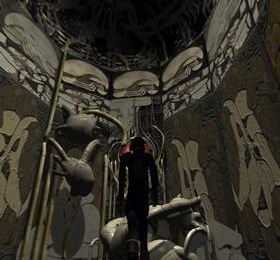
Geoffrey Duke and I wrote an opposing theory called the Single Physical Dragon Theory which supports the view that the dragon is the same physical creature in all four games. The physical dragon is born as the coolia Lagi in Panzer Dragoon Zwei, and dies after living a long life as the dragon of legend at the end of Panzer Dragoon Orta. The Heresy Program is also present, and he shares a body with Lagi in the first three games. In Panzer Dragoon Orta, the same Lagi from Panzer Dragoon Zwei is present, but he is on his own. If this theory is correct, there is no need to invoke a dualist conception of the mind outside of the Heresy Program and Lagi’s relationship. When that relationship between the two halves ends, materialism is at least as suitable as an explanation of the dragon’s mind as dualism.
I also wrote another theory called the Attached Dragon Mind Theory. I based this theory on a number of passages in Lundi’s diaries, particularly this description of Lagi’s “death” at the end of Panzer Dragoon Zwei:
Exhausting all his power, he discarded his body, and entered a deep sleep. I assume he has now reemerged with a new body, and chosen you as his rider.
However, unlike Lance’s Different Dragons Theory, I propose that both the physical dragon and the Heresy Program survive, at least partially. The contents of the dragon’s entire consciousness, including both the physical dragon’s mind and the Heresy Program’s mind, is uploaded and downloaded into a new body. This theory strongly supports a dualist conception of the mind - that consciousness is somehow separable from the body, capable of being transferred to a new host independently of its old body. That’s not to say that it’s incompatible with materialism either; a snapshot of the contents of the dragon’s brain could simply be digitalised, transferred, and recreated in the same way that binary ones and zeros are transferred from one computer hard disk to another. The old body would be destroyed, but a duplication of the dragon’s memories would live on in a new body.
Conclusion
It is unclear if Team Andromeda and Smilebit were inspired by the mind-body problem, but if they weren’t, they more than likely drew inspiration from the religious concept of the soul. Descartes certainly did in his quest to show that the mind and body were distinct (arguably, this was his motivation for making the distinction in the first place). It is interesting that while the Heresy Program (the mind) died, the physical dragon (the body) lived on. In most religions it is the opposite: the body dies, but the mind (soul) lives on in the afterlife.
Regardless, the existence of an intelligent dragon acting independently of the Heresy Program in Panzer Dragoon Orta shows that there is more to the physical dragon than simply being a meat sack body controlled by a Heresy Program mind. There may be other arguments supporting a dualist concept of the mind, but such arguments exist independently of the physical dragon’s relationship with the Heresy Program. As with human beings, we must weigh up the arguments for and against the dualist and materialist concepts of the mind to get closer to the truth.
